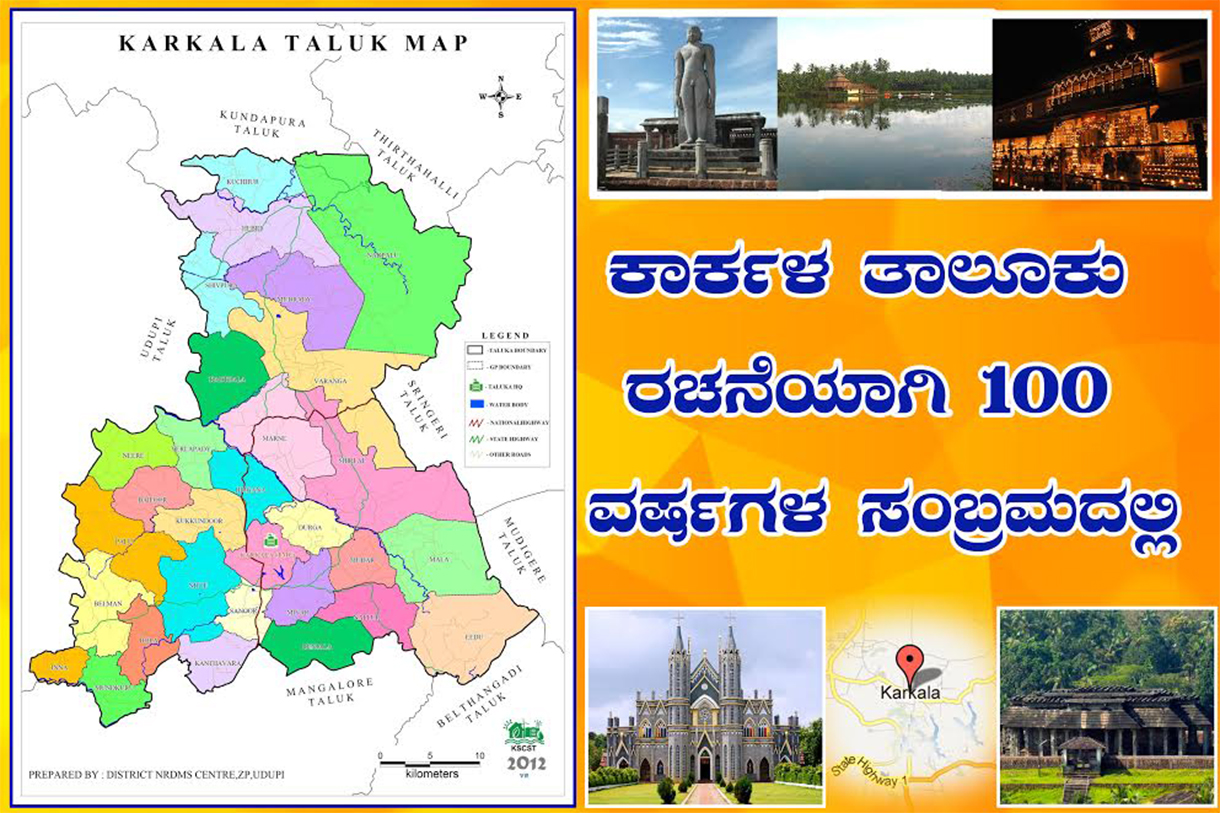KARKALA: History and Origin
Karkala has its history from the earliest 10th century; the time ancient Kings ruled over here and then came the Jains who ruled there for about 300 years, due to this reason this place is also known as Jain Thirtha. The landscape is surrounded by thick green forests, black rocks, roofed houses with wells, and lots more.

Original Identity
If there is one thing that symbolises the sunny and serene town of Karkala in Udupi district, it is the black stone. It is prevalent everywhere – in the rocky hills, in the monolithic statue of the Jain saint Bahubali, in the numerous basadis and temples found all over the town. In fact the name of the town, ‘Karkal’ is derived from ‘kari-kallu’ meaning black stone in Kannada. The town nestles in the backdrop of the Western Ghats. There are different names by which this place has been called. Tulus, Jains and Kannadigas call this place as KARLA.
Karkala has a number of natural and historical landmarks and Sightseeing
The statue of Bahubali , the son of the first Jain Tirthankar, is the most important and visible of all the structures in Karkala. You can spend hours just watching the statue and marvel at the skill of the sculptors who chiseled it. Visit the Jain Basadi opposite to the statue and in front of the temple there stands a 50 feet tall pillar called Manasthambhas . You will have your fill of spirituality if you decide to visit all the 18 basadis of antiquity, including Mahaveera Basadi, Chandranathaswamy Basadi, Adinathaswamy Basadi, Ananthanatha Basadi, Guru Basadi, and Padmavathi Basadi.
Karkala is a historical town and is best known for the 42 feet tall statue of Bahubali (Gomateshwara) carved out of a single block of granite rock. The statue was erected at the behest of a Jain king in 1432 and is an important pilgrim destination for the Jains.This statue of Lord Bahubali was installed at Karkala on February 13, 1432 on the instructions of the pontiff of Karkala, Lalitakeerti.Other than the statue, there are many other important temples that attract a large number of devotees. Every 12 years, hundreds of thousands of Jain devotees congregate to perform the Mahamastakabhisheka, a ceremony where the Gommateshwara statue is bathed and anointed with milk, water, and saffron paste and sprinkled with sandal wood powder, turmeric, and vermilion. The last Mahamastakabhisheka was held in February 2002, and the next will be in 2014.
In 1586 AD. king Immadi Bhairava (Bhairava II) constructed the Chaturmukha Basadi on top of a small rocky hill. The Basadi has four identical entrances from the four quarters leading to the Garbagriha and hence is popularly known as Chaturmukha Basadi. This is the most celebrated structural Basadi in Karkala, This is situated exactly opposite of Gomateshwara statue.
Attur is a village on the outskirts of Karkala and is famous for the St.Lawrence church here. The shrine of St.Lawrence was established in 1750 AD and attracts lots of devotee’s regardless of their religion. The St Lawrence Church was built in 1845.
Udupi is a temple Town, Udupi is 32 kms from Karkala and the temples draws hordes of devotees as does the beaches.in
Karkala also there are some temples like Anantashayana and Venkataramana, Mahamaya Mukhyaprana, The second most important temple in Karkala is the Lord Vankatramana temple also known as the Padu Tirupathi and it attracts thousand of devotees each year.

